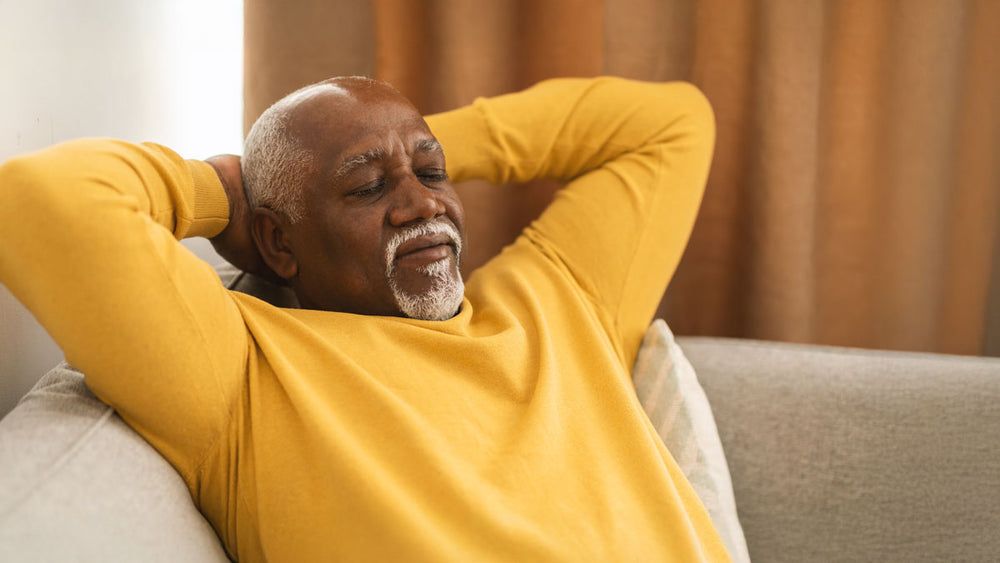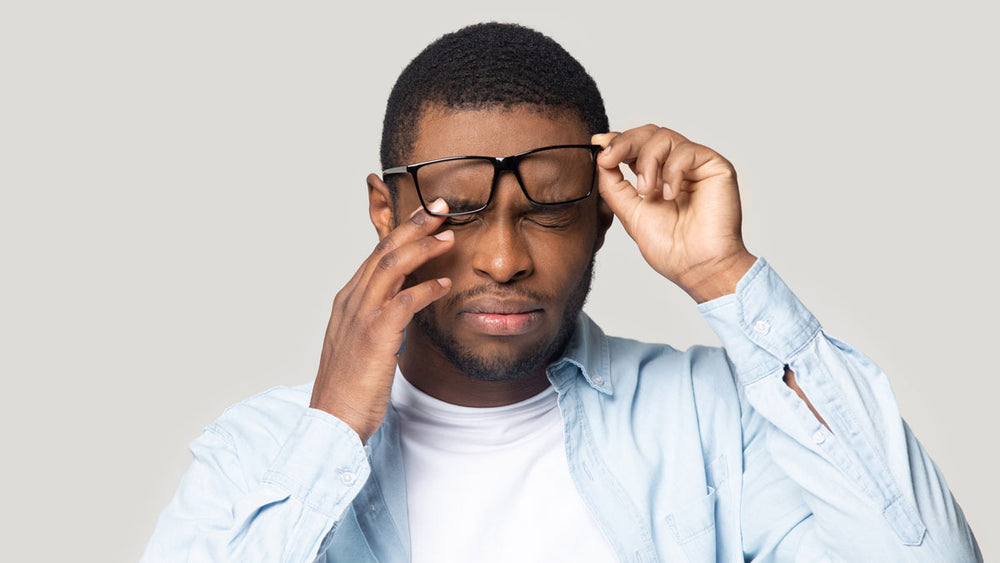How Aging Affects Sleep: Common Sleep Disorders and Tips for Better Rest
Aging is a time for relaxation, learning new hobbies, spending time with children, grandchildren, and traveling. However, many older adults struggle with sleep, which can significantly impact daytime energy levels and the ability to be present. In this article, we will learn how aging affects sleep patterns and some common sleep disorders that can keep you from feeling well-rested in the morning.
The Impact of Aging on Sleep Architecture
Changes in Sleep Stages: Less Deep Sleep, More Wakefulness
As we age, our sleep architecture, or the structure and pattern of our sleep cycles, changes. Older adults experience a gradual decrease in deep sleep, with studies showing a 2% per decade decrease up to age 60. REM sleep also diminishes. This results in lighter sleep, increased nighttime awakenings, and reduced overall sleep efficiency. These changes are largely due to nerve damage and hormonal changes that occur with aging.
The Circadian Rhythm Shift: Earlier Wake-Up Times, Disrupted Sleep Patterns
We each have an internal clock, AKA circadian rhythm, that tells us when we should be sleeping and when we should be awake. Older adults have a shift in circadian rhythm, often getting sleepy earlier in the evening and waking up earlier in the morning. The body produces less melatonin, the hormone that promotes sleep, making it harder to fall and stay asleep. Additionally, retirement and reduced daytime activity can further disrupt sleep patterns, sometimes leading to daytime napping, which reduces nighttime sleep.
Strategies for Improving Sleep Quality in Older Adults
Creating a Sleep-Conducive Environment: Optimizing Your Bedroom
A restful sleep environment is essential. Choose a comfortable, supportive mattress and pillows, keep pathways clear to prevent nighttime falls, and minimize clutter and dust to reduce allergens. Use blackout curtains to block light and maintain a cool, well-ventilated room. Consider white noise machines or earplugs if noise is an issue.
If frequent nighttime wakings occur, consider looking at potential medications that can be contributing, health conditions such as heart failure, limiting evening liquids, and avoiding caffeine intake 3- 4+ hrs before bed; in males, having the prostate checked for enlargement. Additionally, assessing glucose levels can be important; higher sugars overnight tend to increase urination.
Establishing a Consistent Sleep Schedule: Regular Bedtimes and Wake-Up Times
Going to bed and waking up at the same time every day, even on weekends, is one of the most effective ways to improve sleep quality. A regular schedule helps reinforce your body’s natural rhythms, leading to better brain function, mood, and overall health. Irregular sleep patterns increase confusion, risk of falls, and weaken the immune system.
Mindful Practices: Meditation and Relaxation Techniques
Relaxation techniques such as deep breathing exercises, progressive muscle relaxation, guided imagery, and mindfulness meditation can help calm the mind and body before bed. These practices reduce stress, ease muscle tension, and make it easier to fall asleep.
Limiting Screen Time: Reducing Exposure to Blue Light
Blue light from phones, tablets, and TVs can suppress melatonin production and disrupt sleep. Keeping screens out of the bedroom can help tremendously. Additionally, setting a phone cutoff time at least 1-2 hours before bed and dimming lights in the evening can help your body prepare for sleep. Try reading or journaling before bed instead of watching TV or using cell phones.
Addressing Common Sleep Disorders in Older Adults
Sleep Apnea: A Breathing Disorder Affecting Sleep Quality
Sleep apnea, characterized by pauses in breathing during sleep, is common in older adults and can lead to interrupted sleep, daytime sleepiness, and increased health risks. Symptoms include loud snoring, waking up coughing or gasping for air, morning headaches, and frequent awakenings.
Sleep apnea is very common and commonly underdiagnosed, as many experience symptoms and think they are normal. During apnea episodes, blood oxygen levels decrease, reducing oxygen flow to the brain and other vital organs. It can contribute to hypertension, obesity, and shortness of breath.
Sleep apnea is also associated with a significantly higher risk of memory/thinking problems and a 28–54% increased risk of Alzheimer’s or Parkinson’s disease. Sleep apnea can be easily treated with CPAP or continuous positive airway pressure therapy that keeps the airway open. It is diagnosed with a sleep study.
Restless Legs Syndrome: Uncomfortable Sensations and Disrupted Sleep
Restless legs syndrome (RLS) causes uncomfortable sensations in the legs and an irresistible urge to move them, often worsening at night and disrupting sleep. Some research has linked low iron, particularly ferritin levels, and RLS. If you are experiencing these sensations, talk with your healthcare provider about checking an iron panel. In one study, participants with RLS with a ferritin level above 50 mcg/l experienced fewer symptoms; however, please do not take supplemental iron without knowing your levels, as too much can become toxic.
When to Seek Professional Help: Recognizing the Signs
If you experience ongoing difficulty falling or staying asleep, excessive daytime sleepiness, or symptoms of sleep disorders, consult a healthcare provider. Persistent sleep problems may indicate underlying health issues requiring medical attention.
Sleep disorders do not just only affect older adults. Adults of any age may have sleep apnea symptoms and restless leg syndrome. If you are experiencing symptoms, do not just chalk it up to being normal, as it has been happening for a while, but get it checked out. Your brain depends on it.
-
Barber, S. (2019, March 4). Mayo Clinic study shows sleep apnea may be tied to increased Alzheimer's biomarker in brain. Mayo Clinic News Network. Retrieved April 22, 2025, from https://newsnetwork.mayoclinic.org/discussion/mayo-clinic-study-shows-sleep-apnea-may-be-tied-to-increased-alzheimers-biomarker-in-brain/
-
Edwards, B. A., O'Driscoll, D. M., Ali, A., Jordan, A. S., Trinder, J., & Malhotra, A. (2010). Aging and sleep: physiology and pathophysiology. Seminars in respiratory and critical care medicine, 31(5), 618–633. https://doi.org/10.1055/s-0030-1265902
-
Guay-Gagnon, M., Vat, S., Forget, M. F., Tremblay-Gravel, M., Ducharme, S., Nguyen, Q. D., & Desmarais, P. (2022). Sleep apnea and the risk of dementia: A systematic review and meta-analysis. Journal of sleep research, 31(5), e13589. https://doi.org/10.1111/jsr.13589
-
Sanitas Medical Center. (n.d.). Better sleep with these 5-minute relaxation techniques. Sanitas Medical Center. https://www.mysanitas.com/en/blog/better-sleep-these-5-minute-relaxation-techniques
-
Sleep disorders in older adults. (2024, August 19). MedlinePlus. Retrieved April 22, 2025, from https://medlineplus.gov/ency/article/000064.htm
-
Sun, E. R., Chen, C. A., Ho, G., Early, C. J., & Allen, R. P. (1998). Iron and the restless legs syndrome. Sleep, 21(4), 371-377. https://pubmed.ncbi.nlm.nih.gov/9646381/






















Comments
Join The Conversation...